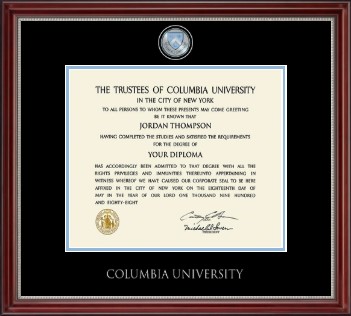
Commencement marks a significant milestone in one’s academic journey, and the ceremonial donning of graduation regalia adds a touch of tradition and formality to the occasion. The academic regalia—comprising the gown, cap with tassel, and often graduation stoles, cords, and hoods—holds historical significance. And, there are specific graduate regalia guidelines that are worth understanding to ensure you wear them with elegance and pride.
What is Graduation Regalia?
Just what is graduation regalia and what does it represent? These ceremonial garments have been a long-standing tradition and have evolved into a symbol of accomplishment, and scholarly identity. Regalia graduation components represent more than just a uniform; it is a symbol of academic achievement, a link to historical traditions, and a tangible representation of a student’s journey through education. The significance of donning the cap and gown goes beyond the ceremony itself, carrying with it a sense of identity, accomplishment, and connection to the broader academic community.
Why do people wear regalia? The tradition of wearing graduation regalia is a rite of passage that dates back to the medieval universities in Europe. During this time, scholars wore robes as a sign of membership in an academic community and to distinguish themselves from the general population. The tradition has endured over the centuries and is now an integral part of graduation ceremonies worldwide. Wearing the cap and gown means you have finished a course of study and are ready for the next phase of your life.
The uniformity of college graduation regalia creates a sense of equality, shared identity, and belonging to a special community. All students, regardless of their background, wear identical clothes to show they each completed their academic journey. It helps graduates feel connected to a long line of scholars who have gone through similar rituals and symbolizes their entry into the educated elite.
What to Wear for Your Commencement Ceremony
Graduation apparel contributes to the formal and respectful atmosphere of commencement ceremonies. It adds a sense of solemnity to the occasion, underscoring the importance of education and the gravity of the achievement being celebrated. The type of regalia you wear at graduation depends on whether you earned a bachelor’s, master’s, or doctoral degree. But just what is included in graduation regalia? Let’s take a closer look.
How to Wear a Graduation Gown
Gowns typically come in various sizes: small, medium, large, and extra large. Finding the right fit is crucial for a polished look, and the commencement department will often let you try on sample sizes during grad fairs. Ensure the gown’s length drapes down around mid-calf and that the sleeves reach your wrists. The shoulder seams should align with your shoulders. If your gown has a collar, adjust it to lay flat on your shoulders and back.
As soon as you receive your gown, unfold it and place it on a hanger to prevent wrinkles. Be sure to steam your gown before commencement to remove any stubborn creases.
How to Wear a Graduation Hood
If you’re earning a master’s or doctoral degree, part of your required regalia includes an academic hood, which symbolizes your advanced educational achievement.
Hold your hood with the colored velvet side facing up and the small tapered edge in one hand. Then place the hood over your head with the small, tapered end at the front of your throat. The largest part of the hood should lie flat against your back, with the colored velvet trim facing outward.
Most hoods have a cord or button loop in the front to keep it in place. Fasten it with a small safety pin or a shirt button before closing your gown. This will prevent your hood from shifting during your ceremony. Once your hood is in place, give it a final check in the mirror to ensure it’s centered and laying smoothly.
How to Wear a Cap for Graduation
The cap, also known as the mortarboard, is a square-shaped hat with a tassel. To ensure proper placement, position the cap so the elastic sits on the back of your head and the forehead point sits about an inch above your eyebrows. Secure cap with a bobby pin to either side of your head, ensuring the mortarboard is level and parallel to floor.
Your tassel should be positioned to the right side of your cap alongside your temple. Once your degree is conferred, observe the significance of this milestone by shifting the tassel to the left side of your cap. Best of all, you can preserve this graduation accessory in a diploma frame with a tassel holder for a professional-looking display in your home or office.
How to Wear a Cord for Graduation
Graduation cords typically represent achievements such as academic honors, membership in an honor society, or participation in a specific program or club. Different academic regalia colors may symbolize different achievements. Cords are draped around your neck with the ends hanging down evenly on either side. Consider creating a wall of graduation memories that includes an honor cords frame, grad cap shadow box, graduation stole frame, and framed degree.
How to Wear a Stole for Graduation
The stole should rest on your shoulders, centered on your neck with the ends falling down the front of your graduation gown. It should be worn over the graduation gown, usually with cords laying on top of it. However, remember that the specific guidelines may vary based on your educational institution’s traditions, so it’s a good idea to check for any specific instructions provided by your school regarding the wearing of graduation regalia.
Preserving Your Graduation Regalia
Do people keep their graduation regalia? Yes! Framing your graduation stole, cords, honors medallion, and decorated grad cap are essential for capturing the significance of the accomplishment, creating a lasting memory, and providing a tangible representation of the graduate’s journey. It transforms these items into meaningful and decorative elements that contribute to the individual’s sense of pride.
A graduation stole shadow box frame makes for a unique keepsake that can be proudly exhibited in a home or office, serving as a constant reminder of your educational journey. This not only adds a touch of personal accomplishment but also contributes to a professional and polished ambiance.
Did you decorate your graduation cap in black velvet and rhinestones? Or perhaps you commissioned an artist to create a painted mortarboard masterpiece for the big day? Framing is a means of preserving and protecting this creative piece of art in its original, pristine condition. A graduation cap frame protects it from dust, wear, and tear, ensuring that your cap remains a cherished family heirloom for years to come.
Wearing graduation regalia is not merely a dress code; it symbolizes years of hard work, dedication, and academic achievement. Remember, the pride you take in wearing your regalia reflects the pride you take in your accomplishments. So, once you’ve worn your academic regalia, make sure you preserve them in beautifully handcrafted graduation shadow boxes.













